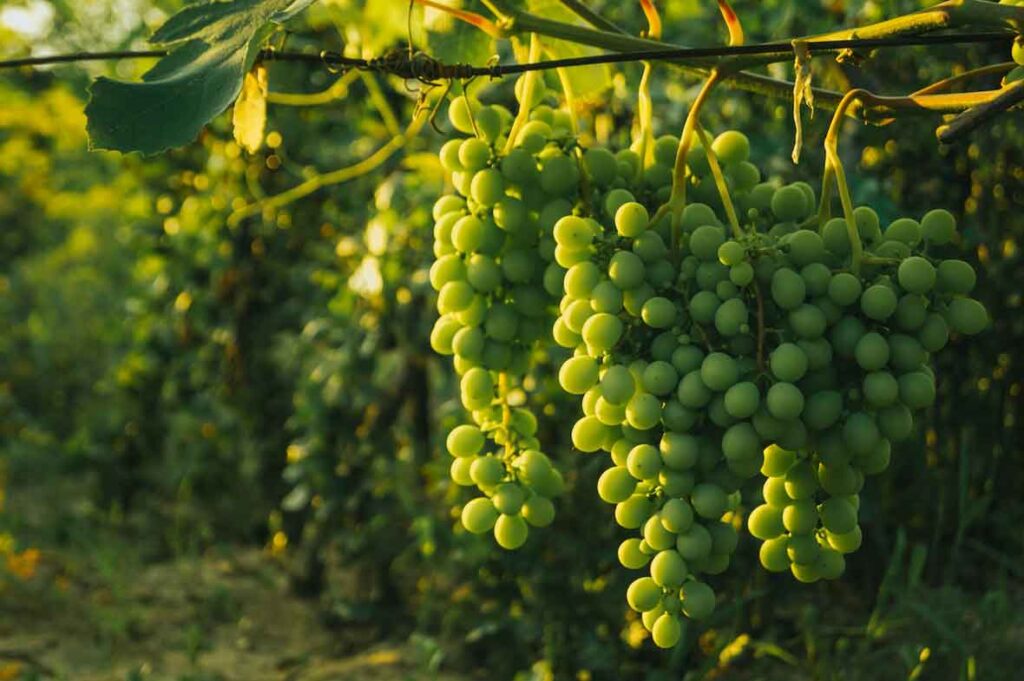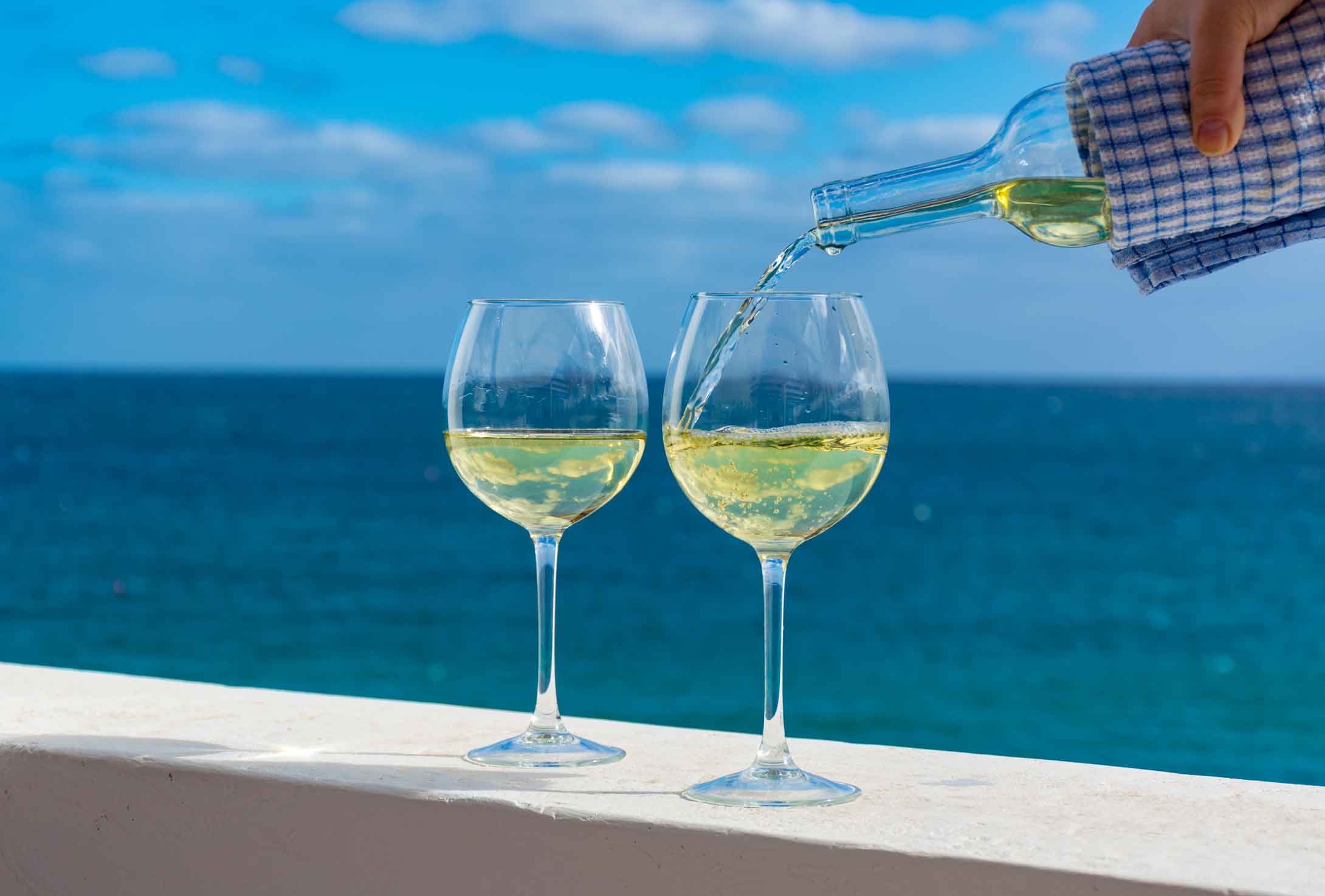Not all white wines are the same. There are no strict rules anymore about when to serve white and when to serve red wines. Basically, drink what you like and pair it with what you like to eat. In the mood for spicy foods? Then pick a wonderful dry white or a robust red, it’s all your choice, no wrong answer. In the end, everyone will be much happier. But, how do you know which white wine you should choose? Sauvignon Blanc vs Riesling, what’s the difference?
First off, start with the basics of wine tasting. And, no, you won’t need to really know all of the fancy lingo. Let’s stick with the basics.
Wine Tasting Notes
Wine has three different tasting notes. Like anything else you may taste and try. First off, what do you see? Observe its appearance. Look at its color. Then smell its aroma. What notes stick out to you? Citrus fruits? Apples? Then taste… what are you tasting? Is it crisp? Does it feel heavy on your tongue?
Riesling vs Moscato – A Beginner’s Guide
Sauvignon Blanc vs Chardonnay – Your Guide to the Difference
These three notes, once you understand what you like, will direct you to your next glass or bottle of wine. Personally, I like lighter-colored wines, with a hint of citrus, a crisp taste with a light feeling on my tongue. So in other words, I lean towards a dry white wine. With that in hand, I can easily steer myself to either a Sauvignon Blanc or a Pinot Grigio. But, let’s explore the specific tasting notes showing Sauvignon Blanc vs Reisling wines.
Appearance
Sauvignon Blanc will be a lemon green color while a Reisling will be more of a pale yellow.
Smell
Sauvignon Blanc will have a “green” aroma. Think fresh-cut grass. Plus you may also smell citrus notes. If the wine is from a warm climate, then you might also pick up a melon note.
Reisling’s armoa wont be as intense. It will be lighter, and more neutral. You may pick up apple, peach, lime, or honeysuckle notes. The sweetness of this wine is due to the residual sugar found in the Riesling grapes.
Taste
Sauvignon Blanc will have a dry taste and depending on where the Reisling is from, it can be either dry or sweet tasting. Riesling wines as a general rule will be sweeter than Sauvignon Blanc.
As to taste, this also includes what I call, “mouth feel”. Is the wine have a heavy taste? Is it light? When looking at wines, use this heavy versus light to see which direction on the acidity scale you land. High acidity would have a more crisp and light feeling. While the lower end of the acidity scale would have the wine feel heavy.
Another way to look at the acidity scale is how much does the wine make your mouth water? A tart Granny Smith apple makes your mouth water because of its higher acidity level. The more your mouth waters, the higher the acidity.
Differences
Although each of these is white wine, they don’t have much in common. The key difference is taste… which yeah you’re saying “of course”, but it’s really the main difference. The grape variety controls the profile and the climate impacts the flavor of the grapes.
Coloring and aromas can be very similar. In the end, Rieslings will be sweeter. A Sauv Blanc tends to be drier and often has a grapefruit flavor.
Sauvignon Blanc originates from France. The wine dates back to the 1500s. While Reisling is from Germany and there are records showing it as far back as 1435. Sauvignon Blanc grapes originally were found in the Burgundy region of France, they have also can be traced back to the Loire Valley and the Bordeaux regions.
The Sauvignon Blanc grape flavor profiles really depend on where grown. If grown in a cooler climate, it will produce “green flavors” of grass, green bell pepper, green apple, and tropical and floral notes. In a warmer climate, the grapes tend to have more tropical notes with a grapefruit-forward flavor.
Interesting fact, both Riesling and Sauvignon Blanc were the first wines to be bottled with a screwcap. Both are served young and not usually aged.
Riesling grapes originate from the Rhine region. They are the 20th most grown grape in all parts of the world. Interestingly, sweet Rieslings is one of the top three white wines with Chardonnay and Sauvignon Blanc being one and two.

Other White Wines
As I mentioned earlier, there are many different white wines to choose from. All are great wines, it just depends on what you like. You ask, well doesn’t it also depend on what I am serving with the wine? Isn’t food pairing important? There aren’t any hard and fast rules anymore. And really, why should there be? Drink what you like with what you like to eat. Keep it simple.
Looking for another sweet wine? Then try a Moscato. Usually not too sweet, but a great dessert wine. Dessert wine? Yeah, pair it with your favorite dessert, or have a glass as dessert. See… options!
What other white wines might you try?
Chenin Blanc
This type of wine can be made into many different styles with their own unique flavor profiles. Interesting fact, over 50% of the vineyards worldwide for this grape are found in South Africa. So what flavor profiles can you expect?
- Dry – flavors of pear, ginger, and chamomile
- Off Dry – richer flavors of ripe pear, ginger, jasmine, passion fruit, and honeycomb
- Sweet – flavors of persimmon, toasted almond, mango, ginger, and mandarin orange
- Sparkling – these can be dry to sweet and have flavors of yellow apple, plum, ginger, and floral notes
Pinot Blanc
This wine is made from white grapes that have been mutated from Pinot Noir grapes. If you are like me and hadn’t heard of this one, it’s because it’s mostly found in Germany and Northern Italy. It’s a refreshing, peachy, and dry wine. Add this one to your list to try if you see it on a menu.
Chardonnay
Chardonnay grapes are the most planted worldwide. They are found everywhere, including the United States, New Zealand, and France. Chardonnay wines can be oaked or unoaked. My personal preference is unoaked. This style has a crisp and clean flavor profile.
Oaked chardonnay wines usually will have a buttery taste. This comes from the aging process in the oak barrels, but also a process called malolactic fermentation. This process converts the tart malic acid into a softer, creamier lactic acid. This causes the wine to have a softer, creamier, buttery taste.
Chardonnay is the most popular white wine in the United States. It’s the first choice for most restaurants for a white wine offering.
Like all grapes, the flavor profile will change depending on climate. In cooler climates, the flavors will lean towards green and citrus fruits. In warmer climates, the flavors will be more with stone fruit and sometimes notes of tropical fruit.
French Pinot Gris
I had to look this one up when at a French restaurant. It’s a lot like a Pinot Grigio, but a bit more of an aromatic white wine. It can be crisp and it can be a more fully bodied wine. Look up the winery and its region to determine which side of the spectrum it lands on.
Which One will you choose?
As you can see, not all white wines are alike. Which one will you try first? Find a local wine bar and try different styles, and see which ones you like the best.
You can do samples without a large commitment to a bottle. I like to track my favorites (and not so much favorites) in the Vivino app. That way I never forget a really good glass of wine.
When looking for a new wine to try, go for the style versus where it’s from. Here’s why. We often think wine can only come from a certain region, think France, New Zealand, California, etc. But, did you know Washington State is the second largest wine producer in the United States? Most of their wineries, which number over 750, are located in Eastern Washington. Outside of its red wine, the state is also known for its dry riesling wines. The high altitude produces a grape that is high in acidity.
New York, the third largest producer of wines in the United States offers an amazing Riesling wine. The cool climate of the Finger Lakes region is the perfect place to grow these grapes. But, don’t discount their other varieties.

